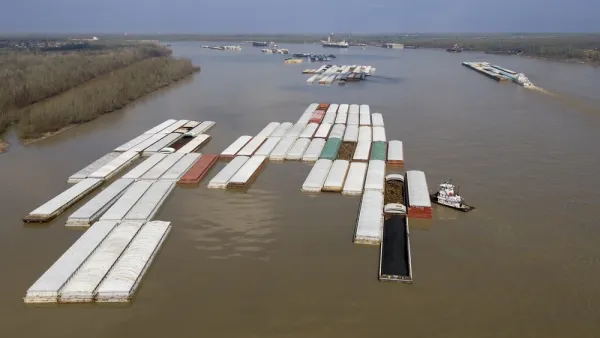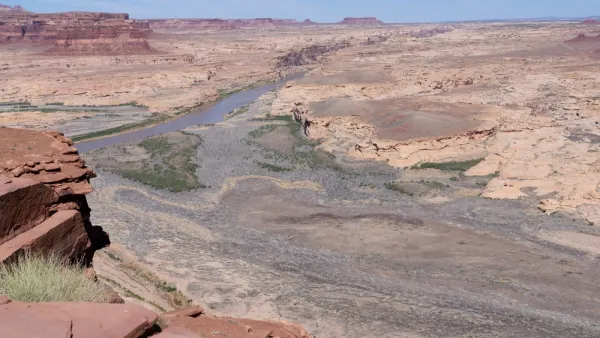The Mississippi River handles $7 billion in trade as one of the world's largest navigable inland waterways. A Midwestern drought has brought the river to water levels so low that they threaten to shut down shipping, reports John Schwartz.
"It would cripple our national economy to shut down the Mississippi River," said R.D. James, a Missouri farmer and a member of the Mississippi River Commission. Those involved in the shipping business have requested the federal government to destroy rock formations that hinder navigation in shallow water and to release water from reservoirs along the upper Missouri River. The Army Corps of Engineers has already been breaking down the formations and expect the work to be completed in 30-45 days. However, the corps has refused the second request, "saying it does not have the authority to use that water to aid navigation on the Mississippi."
Water levels have been dipping more slowly than expected, even though the Waterways Council initially warned that shipping would come to a halt by Monday. The corps estimates that water levels will dip below nine feet by January 11, and unless there is substantial rainfall or the release of water, shipping will come to a stop. "A coalition of businesses involved in trade along the Mississippi and sympathetic lawmakers have asked President Obama to order the water released," says Schwartz, "But without action from the president, Congress or the courts, the water will stay behind the reservoirs of the upper Missouri."
Carriers have been loading barges to a lighter weight to navigate the water depth, but the water crisis may force farmers to consider other transportation options. However, "[w]ith the threat of a shutdown ahead, farmers might decide to hold their grain instead of shipping it in a more expensive manner," said Gregory L. Guenther, a farmer and corporate consultant. Shifting transportation modes would be a short-term solution, but Steven L. Stockton, the director of civil works for the corps, said, "The only long-term solution is more rain."
FULL STORY: Cargo Continues Moving on the Mississippi River, but Perhaps Not for Long

National Parks Layoffs Will Cause Communities to Lose Billions
Thousands of essential park workers were laid off this week, just before the busy spring break season.

Retro-silient?: America’s First “Eco-burb,” The Woodlands Turns 50
A master-planned community north of Houston offers lessons on green infrastructure and resilient design, but falls short of its founder’s lofty affordability and walkability goals.

Delivering for America Plan Will Downgrade Mail Service in at Least 49.5 Percent of Zip Codes
Republican and Democrat lawmakers criticize the plan for its disproportionate negative impact on rural communities.

Test News Post 1
This is a summary

Test News Headline 46
Test for the image on the front page.

Balancing Bombs and Butterflies: How the National Guard Protects a Rare Species
The National Guard at Fort Indiantown Gap uses GIS technology and land management strategies to balance military training with conservation efforts, ensuring the survival of the rare eastern regal fritillary butterfly.
Urban Design for Planners 1: Software Tools
This six-course series explores essential urban design concepts using open source software and equips planners with the tools they need to participate fully in the urban design process.
Planning for Universal Design
Learn the tools for implementing Universal Design in planning regulations.
EMC Planning Group, Inc.
Planetizen
Planetizen
Mpact (formerly Rail~Volution)
Great Falls Development Authority, Inc.
HUDs Office of Policy Development and Research
NYU Wagner Graduate School of Public Service





























